Attractions
The magnificent hilltop city of Toledo, about 43 miles (70km) southwest of Madrid, was immortalised by Spain's renowned artistic genius El Greco in a cityscape that currently hangs in the Metropolitan Museum of Art in New York. The city has changed little since El Greco captured it on canvas in 1597, with its golden spires and Gothic buildings spreading across the Tagus River Gorge, overlooking the plains of New Castille. The ancient city was capital of Visigoth Spain in the 5th and 6th centuries, and as time passed Muslim, Jewish and Christian communities have all left their mark on the city's rich architectural heritage - from the Moorish gate (Puerta de Bisagrai) to the Gothic convent of San Juan de los Reyes. Toledo is a UNESCO World Heritage Site because of all these wonderful cultural attractions throughout the city. Pride of place is held by the El Greco's 'Burial of the Count of Orgaz' painted on the wall of the Santo Tome. The town's attractions and main street are packed with tourists throughout the summer, but it is easy to escape into one of the enchanting side streets, which wind up and down the hillside.
| | 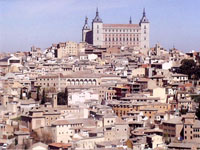 |
| Reina Sofia National Art Centre Museum |
The third of Madrid's famed art galleries, the Reina Sofia, is dedicated to 20th century Spanish art, having been designed to give Spain a museum to equal France's Pompidou Centre and London's Tate Gallery. The museum was opened by Queen Sofia in 1986, and is housed in the former Hospital de San Carlos. The artworks displayed here include those of Juan Gris, Salvador Dali, Joan Miro and Pablo Picasso. The star attraction of the museum is Picasso's controversial Guernica, depicting the Nazi bombing of the Basque town in 1937 in support of Franco's cause in the Spanish Civil War. Until 1980 this painting hung in New York's Museum of Modern Art.
| | 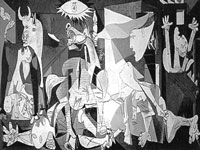 |
Madrid's famous central arcaded square dates from 1619 and was built by Philip III whose statue still stands in the centre of the cobbled expanse. In medieval times the Plaza de Arrabal, as it was then known, was the venue for numerous public spectacles, ranging from knights' tournaments and festivals to the burning of heretics at the stake. Today it remains a public gathering place, but the majority of people who congregate in the sidewalk cafes to sip sangria on summer nights are tourists, enjoying impromptu music performances and watching the passing parade.
| | 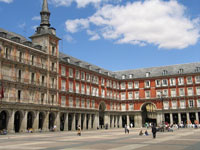 |
Madrid's lush central park, one of many green spaces in the city, covers 350 acres (142 hectares) and was laid out originally as the private garden of Philip IV. The vast park features formal gardens, statuary, fountains, lakes, exhibition halls, children's playgrounds and outdoor cafes. Visitors can stroll among the trees, admire the rose garden, and take a boat ride on the lake. At weekends the park comes alive with buskers, clowns, fortune-tellers and sidewalk painters.
| | 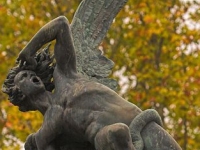 |
| Monastery of San Lorenzo de El Escorial |
The huge granite rectangular edifice, topped with four spiral towers, is a forbidding sight in the town of San Lorenzo de El Escorial about 30 miles (50km) northwest of Madrid. The monastery/church/palace complex was built by Philip II as a memorial to his father, Charles V, and contains some of El Greco's and Hieronymus Bosch's artworks. A vaulted library contains a priceless collection of more than 60,000 ancient books. The monastery itself houses a wealth of paintings and tapestries, and the mausoleum beneath the church's altar serves as a burial place for Spanish kings.
| | 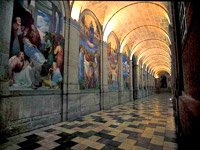 |
| Goya's Tomb (Panteon de Goya) |
The Panteon de Goya is situated in the Glorieta de San Antonio de la Florida and is known as Goya's Sistine Chapel. The artist decorated the dome and cupola of the little chapel with a fresco depicting the miracles of St Anthony, with the use of sponges, a project that took six weeks to complete. Mirrors have been placed in strategic places to provide better glimpses of the art. The chapel also contains the artist's tomb.
| | 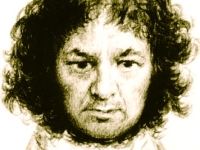 |
| Flamenco at Corral de la Moreria |
Listed as one of Madrid's top ten sights, the tablao flamenco(flamenco show restaurant) is renowned as the oldest and most famous show in the world. The establishment draws kings and queens, international presidents, film stars, and well-known artists and writers who come to witness the nightly performances of top flamenco stars while receiving excellent service and dining on exquisite meals prepared by some of the best chefs in Madrid.
| | 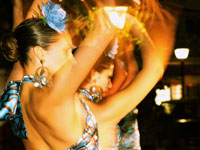 |
The massive bright-white Royal Palace (Palacio Real) on the Plaza de Oriente in Madrid dates from 1734, when the 3,000-roomed royal residence was commissioned by Philip V. It was last called 'home' by the royal family in 1931 - the present king, Juan Carlos, lives in the more subdued Zarzuela Palace outside Madrid. Most of the rooms are now open to the public, and others are used for state business. English tours are run regularly, lasting about two hours, taking visitors to the reception room and state apartments, the impressive armoury and the royal pharmacy. The grandiose state apartments are filled with art treasures, antiques and opulent Rococo décor that could even rival Versailles.
| | 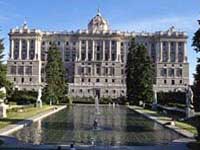 |
The ancient town of Segovia, lying on a slope of the Guadarrama Mountains with the confluence of the Eresma and Clamores Rivers below, is a delightful taste of the glorious past of the area known as Castile in central Spain. Segovia is 54 miles (91km) northwest of Madrid and is well worth visiting for its reputation as being the most beautiful city in Spain, awarded a place on the Unesco World Heritage list. The ancient Romans turned the town into a military base, leaving behind Segovia's famous aqueduct which begins nine miles from the city and until fairly recently still supplied the town with water. The other main attraction in Segovia is the fairytale Alcazar, a fortified citadel perched on the edge of town that the Walt Disney castle is said to be modelled on. The town overflows with Romanesque churches, 15th century palaces, narrow streets and small fountain-splashed plazas and is best explored on foot.
| | 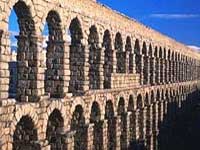 |
One of Madrid's world-famous attractions is the 19th century Prado Museum, one of the world's greatest art galleries, with more than 7,000 paintings that include masterpieces by Fra Angelico, Botticelli, El Bosco, Titian, Rembrandt and Velazquez. The museum began as a Royal collection, which succeeding dynasties have added to. The collection naturally focuses on the Spanish masters, particularly Goya, whose exhibited works follow the development of his painting from the sun-soaked early scenes of joyful festivities to the grim madness characterising his 'black period'. The Prado has few equals - whether you are an art lover or not.
| | 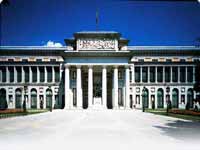 |
| Thyssen-Bornemisza Museum |
The second gallery in Madrid's 'golden triangle' of art museums is the Museo Thyssen-Bornemisza. Housing the former private collection of the Thyssen family, the works were bought by the city of Madrid to enrich its fund of art treasures. The collection, in the restored 18th century Palacio de Villahermosa near the Prado, contains more than 800 paintings, sculptures, carvings and tapestries, ranging from primitive Flemish works to contemporary pieces. Among the highlights are works by Renoir, Durer and Van Eyck. The collection includes some major American works as well.
| | 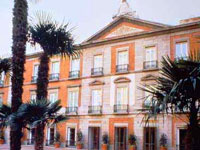 |
One of the most well known plazas in the country, Puerta del Sol is the historical and geographical heart of Spain. Named after Madrid's eastern city gate of the same location, the 15th century entryway was bathed in the rays of the rising sun due its eastern position. Littered with famous landmarks, Puerta del Sol is home to the famous Spanish clock tower whose bell marks the beginning of the New Year. The official symbol of Madrid, the El Oso y El Madroño, a 20-ton statue of a bear eating fruits off a Madrono tree, as well as a large equestrian statue of King Carlos III are also on display. Unmistakable is the luminous Tio Pepe sign, a longstanding hallmark of Puerta del Sol and more discreet is the kilómetro ceromarker on the pavement, which signals the official starting point of six of Spain's major highways and symbolically places Puerta del Sol as the centre of Spain, cementing it as a site of many rallies and protests against violence and war.
| | 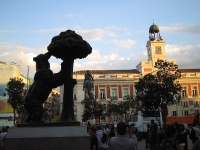 |
Located nearby the Prado Museum, the Royal Botanic Garden is one of the oldest botanic gardens in Europe. With the foundation of the garden ordered by King Ferdinand VI in 1755, the Royal Botanic Garden has been cataloguing and nurturing rare species of flora for over 200 years. A welcomed break after hours of art, architecture, and frenetic streets, the garden is a small haven of natural splendour. Divided into three terraces and extending only eight hectares, the garden boasts an array of 30,000 plants and flowers and 1,500 trees. Not only interested in exhibiting plants, the gardens' initial aim was to teach botany, promote expeditions to discover new plant species and classification. Nowadays the Royal Botanic Garden houses a cutting edge research centre, extensive herbarium and large library. Visit the Classical Romantic Garden, Villanueva Pavilion, the Graells Greenhouse and the Exhibition Greenhouse.
| | 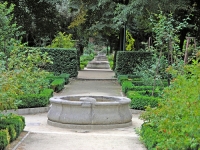 |
| National Archaeological Museum of Spain |
A worthwhile visit in a country known for its rich history, the National Archaeological Museum was founded in 1867 with the purpose of being a depository for the collection of numismatic, archaeological, ethnographical and decorative art collections compiled by the Spanish monarchs. Situated in a stately neoclassical mansion alongside the National Library, the museum's collection ranges from prehistoric times to the 19th century. One of the major exhibits is the Iberian statue, The Lady of Elche, a carving from the 4th century B.C. found on the southeastern coast of Spain. Other intriguing exhibits are the Islamic collection, outlining the long and influential history of the Moors in Spain and the replica of Altamira Cave, inhabited over 18,000 years ago, with rock paintings picturing bison, horses, boars and human handprints.
| | 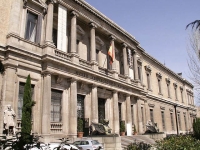 |
A hidden gem, Sorolla Museum was the home of renowned Spanish Impressionist painter Joaquín Sorolla and his family. Donated to the government in 1929 by Sorolla's widow, the house now operates as a memorial and museum, displaying a large collection of Sorolla's glowing works and other contemporary collections including sculpture, ceramics, furniture and jewellery. A fine example of a bourgeois Madrid home from the early 20th century, the attractive museum has an intrinsic Spanish impression with brightly painted walls and dark furniture. Much of the house remains as Sorolla left it, right down to his stained paintbrushes and pipes. Although known for his portraits of aristocrats, Sorolla's passion lay in depicting the everyday lives of Spanish people, with many paintings depicting Spaniards in their native dress, going to the beach and engaging in work or leisure activities.
| | 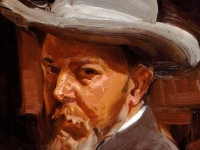 |
Cine Aventura Agüí, one of Madrid's charming old movie theatres, has been converted into a play centre for children featuring ball pools, slides and trampolines, as well as a maze and an art area. There is also a small coffee shop in the building for parents to relax at while their kids play.
| | 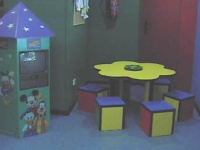 |
A great day out for the kids is a trip to the Safari Park, set in an African-style savannah landscape and home to giraffe, camel, zebra and rhino, as well as some entertaining monkeys. Not to be missed are the daily lion taming shows, and the swimming pool and slide offer a welcome respite after a day of game viewing.
| |  |
Home to nearly 3,000 animals from all over the world, as well as an impressive aquarium, the Madrid Zoo is a great attractions for kids on holiday in the city. Highlights of the zoo include koala bears and giant pandas, as well as a few ever-odd-looking, long-snouted anteaters - truly interesting and unusual animals that children love to see.
| |  |
The Burrolandia donkey refuge, just a short way out of the city, is a great place to take children while on holiday. With upwards of 26 donkeys to take care of, there is always plenty of loving, petting and feeding needed at Burrolandia - definitely a favourite for kids! And the good, clean country air won't do any harm either...
| | 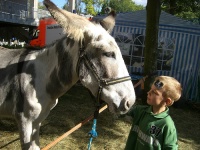 |
Parque de Atracciones is a fantastic amusement park in Madrid for kids to visit, offering a number of rides and attractions for all ages. The Virtual Cinema is a simulator with moving chairs that kids will love, and the Spectacle of Sound, Light and Water show's fireworks and lasers are also a favourite.
| | 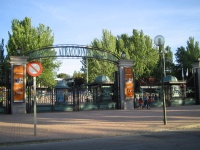 |
|
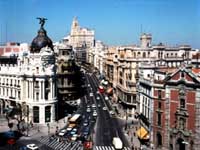
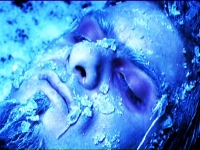
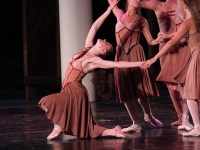
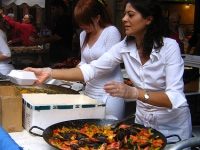
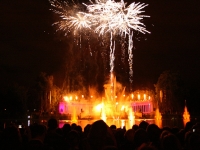
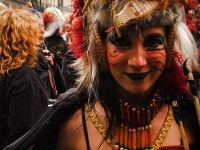
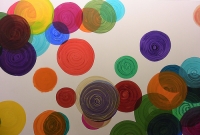
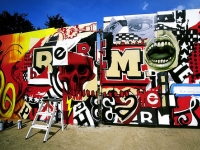
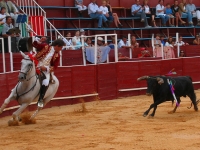




















No comments:
Post a Comment